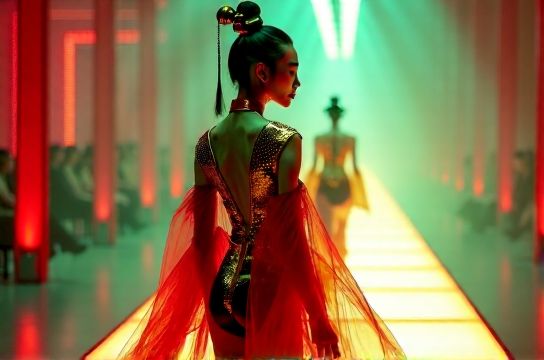Eccentric Chinese Designs That Stand Out
- 时间:
- 浏览:25
- 来源:OrientDeck
If you think Chinese design is all red lanterns and dragons, think again. In recent years, a wave of bold, eccentric Chinese designers has shaken up the global scene with jaw-dropping creativity that blends tradition, tech, and a splash of rebellion. From fashion runways in Shanghai to avant-garde installations in Beijing, these creators are redefining what it means to be 'Chinese' in design.

Take Ma Ke, founder of WUYI and one of China’s first eco-conscious fashion designers. Her work? Garments made from hand-spun hemp, naturally dyed and stitched by rural artisans. At Paris Fashion Week, her collection once featured models walking barefoot through a field of straw—raw, poetic, unforgettable. It wasn’t just fashion; it was a statement against fast fashion’s waste.
Then there’s Uli Sigg Prize winner Liu Wei, whose art installation Cosmos turned discarded furniture into a gravity-defying cityscape suspended from a museum ceiling. The piece challenged viewers to rethink urban chaos—and won rave reviews at the UCCA Center for Contemporary Art.
But it’s not all high art. In Shenzhen, tech-meets-tradition brands like Hanfu Cyber are fusing ancient silk patterns with LED-embedded fabrics. Imagine a Ming dynasty robe that lights up when you move. Yes, really.
To give you a clearer picture, here’s a snapshot of how these eccentric designs stack up in innovation, cultural roots, and global impact:
| Designer/Brand | Design Style | Cultural Influence (1-10) | Innovation Score (1-10) | Global Recognition |
|---|---|---|---|---|
| Ma Ke (WUYI) | Eco-artisan fashion | 9 | 8 | Paris Fashion Week, MoMA Collection |
| Liu Wei | Avant-garde sculpture | 7 | 10 | UCCA, Venice Biennale |
| Hanfu Cyber | Digital traditional wear | 8 | 9 | TikTok viral, pop-up in Tokyo & LA |
| Standard Architecture (Zhang Ke) | Micro-renewal urban design | 9 | 8 | ArchDaily Awards, Venice Architecture Biennale |
What makes these designs truly stand out isn’t just their looks—it’s their stories. They’re rooted in Chinese philosophy, history, and craftsmanship, yet unafraid to break rules. Take Zhang Ke’s Micro-Yuan’er children’s library in Beijing: built inside a centuries-old hutong, it uses recycled bricks and modern geometry to create a space where past and future coexist.
And let’s talk numbers. According to China Daily, the creative industry in China grew by 9.3% in 2023, with design-led startups increasing by over 40% in tier-1 cities. International collaborations—like Adidas x Chinese streetwear label BEAMS—are on the rise, proving that eccentricity sells when it’s authentic.
So if you're looking for inspiration, don’t just visit the Forbidden City. Dive into the alleyways of Shanghai’s M50 art district, scroll through Xiaohongshu (China’s answer to Instagram), or attend Design Shanghai. The future of design isn’t just coming—it’s already here, and it’s wonderfully weird.